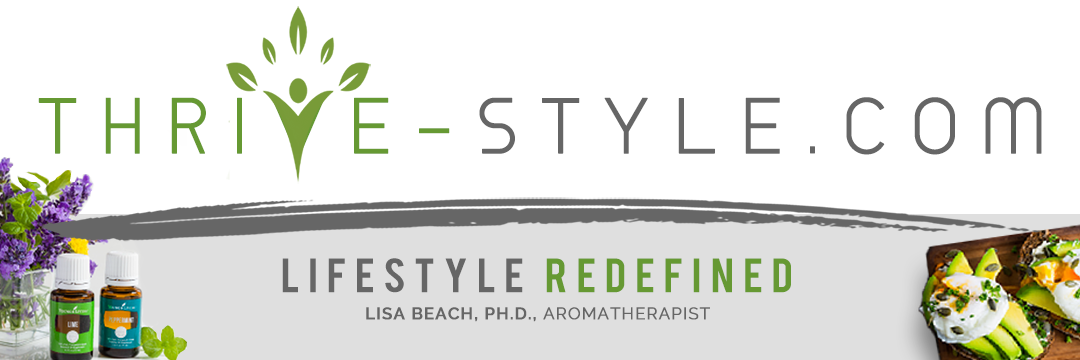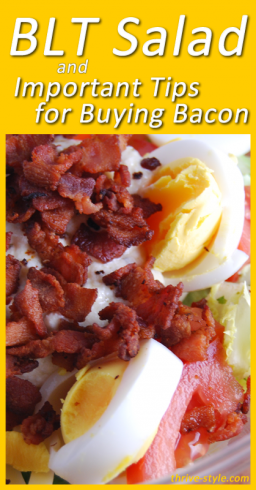I love BLTs, or, mostly I love bacon. Recently, I saw a comment from someone on facebook—they didn’t understand all the hype around bacon, and were wondering why it is so great. I guess if you have to ask that question, maybe this recipe isn’t going to knock your socks off. But if you love bacon, this is definitely for you!
I’m a bacon snob. I’ll only eat it if it’s from a good quality source (not just for good karma and good health, but also because it tastes so much better!).
An interesting thing I’ve found about bacon is that if you don’t know how to shop for high quality bacon, you can be easily fooled into buying the icky quality stuff. The reason for this is that even crappy quality bacon is relatively low in the number of ingredients it contains on the ingredient list. This, however, does not uncover the quality of the meat or what the pig was fed (because you are what you eat eats!).
Case in point. Check out this run-of-the-mill bacon ingredient list:
Cured with water, salt, sugar, sodium phosphates, sodium ascorbate, sodium nitrate.
Many people may pick up on the multiple sodium listings, but we kind of know bacon is high in sodium… so does that mean this brand is ok in moderation?
The truth is, we should moderate our processed sodium intake, and we should also try to get the least processed versions of our meat. You may have heard of some controversy about nitrates and nitrites used in food processing (commonly in things like hot dogs, bacon and processed meats), and I don’t want to get much into that here because the jury is still out on if/how that’s a really bad thing (because we ingest all sorts of nitrates from natural sources too). My philosophy is that the more natural, the better… and if we’re not sure about the nitrates, maybe we should stay away from them when we can choose to.
My uncured organic bacon ingredient list says this:
Pork, water, sea salt, evaporated cane sugar
The point I want to make with these ingredient lists is that although they look a bit different (I would immediately pick the second one just because I know what the ingredients are), it doesn’t tell you what the pig ate that the bacon came from. It doesn’t tell you whether or not the pig was treated with antibiotics and hormones. Those are important things to know because:
1. Pigs that ate better food will turn into bacon that contains more nutrients
2. Pigs that weren’t given antibiotics, hormones, or fed contaminated food will produce bacon that has fewer toxins and chemicals in it
Tips for Buying Bacon:
1. The label should say “Pastured”
2. The label should say “Organic” or “Hormone and Antibiotic free”
3. The label should say “Uncured” (this means it’s less processed with “substances”)
4. The bacon should be specifically marketed as “Microwaveable” (although there may be instructions for microwaving on the package
In my opinion, if you can’t get pastured bacon, you should at least get organic or hormone/antibiotic free!
Ok, enough about that — you’ve now bought the best bacon!
BLT Salad
1 head of green leaf lettuce
1-2 large in-season tomato, in chunks (or a container of grape tomatoes)
1lb bacon, chopped first, then cooked in a skillet till crispy
1/2 cup greek yogurt creamy parmesan dressing (use a non-dairy creamy style dressing to make this dairy free)
2-3 oz cheddar cheese, cubed (optional)
Directions: Chop your lettuce into small pieces. All the pieces should be about the same size, and you should have some dark green pieces and some crunchy pale green pieces all mixed together. In a large salad bowl, add the chopped lettuce (I usually chop it in the bowl with this). Top it with tomatoes and the hot bacon. Pour on the dressing and either put a lid on your bowl and shake it till everything is coated evenly, or stir and mix it until thoroughly.
Serve!
This serves about 3 people in my house. Sometimes I add cooked chopped chicken too, or sliced hard boiled eggs… then it’s not called Salad. It’s just Dinner.


